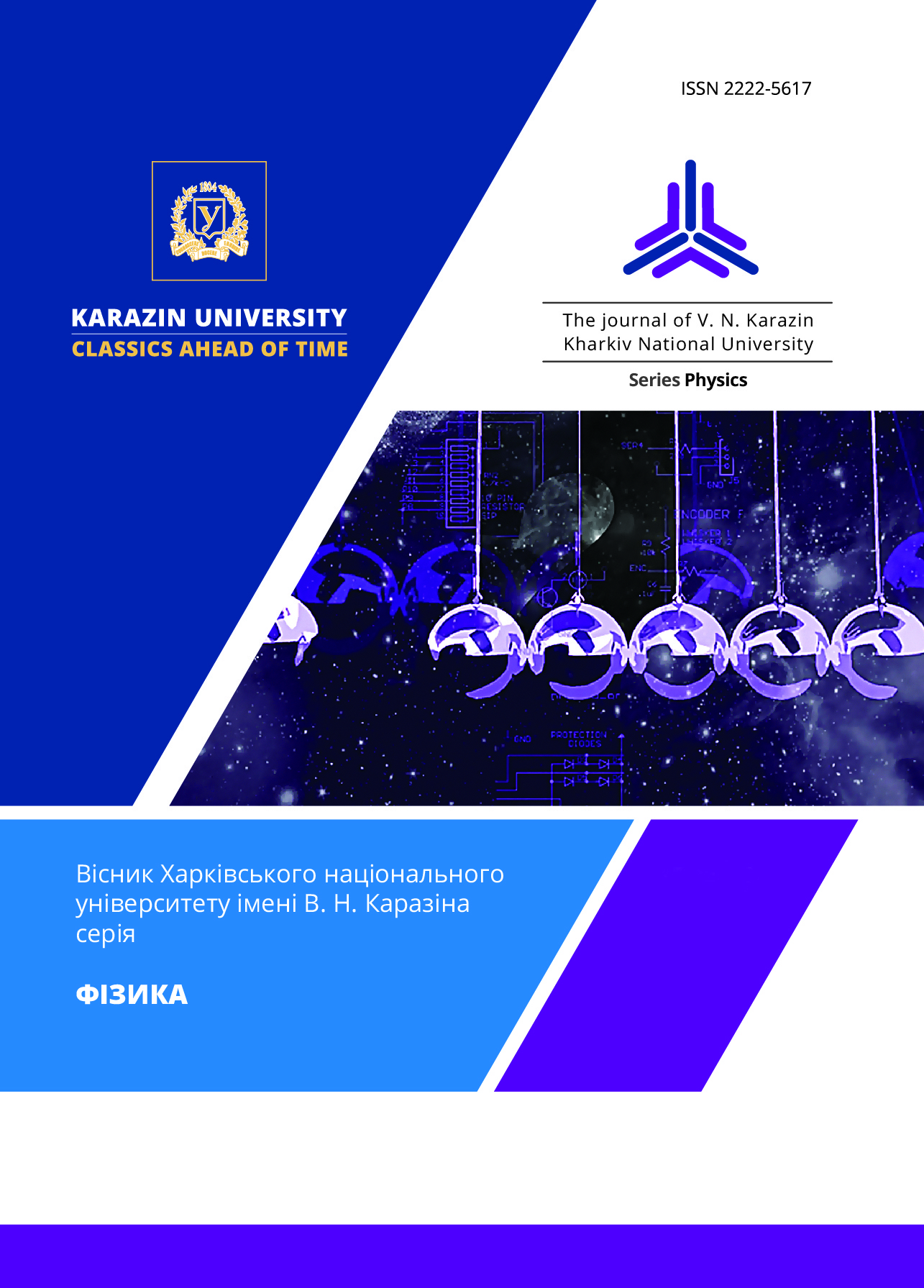One-dimensional image scaling with a reflecting X-ray mask
Abstract
The work deals with the issue of miniaturization of template images using X-ray radiation. The compression method is based on the fact that X-ray radiation is directed at a specific template that reflects X-ray radiation at an grazing angle and a one-dimensional compressed image is recorded on a plane not parallel to the plane of the template. The advantage of this method of image compression is the relative simplicity of its implementation. The paper proposes the use of X-ray multilayer mirrors as reflective X-ray masks (RXM) for one-dimensional image compression. Control of the structural parameters of multilayer mirrors was carried out on a DRON- 3M X-ray diffractometer. The RXM template was formed by sputtering an absorbing WC layer with a thickness of ~0.2 μm through a certain stencil on the surface of a multilayer mirror. The test of the RXM with mirrors based on a pair of WC/Si materials in synchrotron radiation (l~3.5 nm) was carried out. A 14-fold compression of the reflective segments of the RXM with a size of ~50 μm was obtained. Theoretically, the principle possibility of obtaining compression of reflective segments to submicron sizes is shown.
Downloads
References
2. Q. Lin, T. Hisamura, N. Chong, and J. Chang, Proc. SPIE, 11609(116090V) (2021). https://doi.org/10.1117/12.2584288
3. I. Mohacsi, I. VaРСiainen, B. Rösner, M. Guizar-Sicairos,
V.A. Guzenko, I. McNulty, R. Winarski, M.V. Holt, and C. David, , Scientific Reports, 7, 43624 (2017). https://doi. org/10.1038/srep43624
4. M. Kördel, A. Dehlinger, C. Seim, U. Vogt, E. Fogelqvist,
J.A. Sellberg, H. Stiel, and H.M. Hertz, Optica, 7(6), 658- 674 (2020). https://doi.org/10.1364/OPTICA.393014
5. L. Jiang, B. Verman, B. Kim, Y. Platonov, Z. Al-Mosheky, R. Smith, N. Grupido, The Rigaku Journal, 18(2), 13-22 (2001).
6. J. Zhu, Q. Huang, H. Li, Y. Tu, Z. Song, L. Pan, L. Jiang, X. Wang, F. Wang, Z. Zhang, Z. Wang, L. Chen, Proc. SPIE, 7995(79952R) (2011). https://doi.org/10.1117/12.888275
7. S. Rahn, A. Kloidt, U. Kleineberg, B. Schmiedeskamp,
K. Kadel, W.K. Schomburg, J. Hormes, U. Heinzmann,, Proc. SPIE, 1742, 585-592 (1992). https://doi. org/10.1117/12.140591
8. S. Mardix, A.R. Lang, Rev. Sci. Instrum., 50(4), 510-512 (1979). https://doi.org/10.1063/1.1135862
9. I.F. Mikhailov, A.A. Baturin and A.I. Mikhailov, “Analyzing Materials Using Joint X-ray Fluorescence and Diffraction Spectra“, Cambridge Scholars Publishing, (2020), 237 с.
10. C.P. Jensen, K.K. Madsen, and F.E. Christensen, Exp. Astron., 20, 93-103 (2005). https://doi.org/10.1007/s10686- 006-9022-9
11. Jan Vitásek, Jan Látal, Jan Skapa, Petr Koudelka, František Hanáček, Petr Šiška, Vladimír Vašinek, 2011 34th International Conference on Telecommunications and Signal Processing, (18-20 August 2011, Budapest, Hungary) https:// doi.org/10.1109/TSP.2011.6043762
12. L. Wang, T. Christenson, Y.M. Desta, R.K. Fettig, and R.K. Fettig, J. Microlith., Microfab., Microsyst., 3(3), 423-428 (2004). https://doi.org/10.1117/1.1753271








3.gif)
